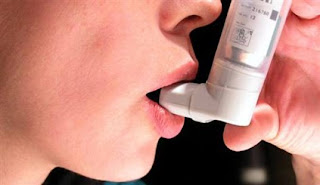Nursing Care Plan for Asthma
Impaired Gas Exchange : Excess or deficit in oxygenation and/or carbon dioxide elimination at the alveolar-capillary membrane
Defining Characteristics:
Asthma is a chronic, or life long, disease that can be serious—even life threatening. There is no cure for asthma. The good news is that it can be managed so you can live a normal, healthy life.
Asthma is a lung disease that makes it harder to move air in and out of your lungs. There are three things that you should know about asthma:
Nursing Diagnosis for Asthma
Impaired Gas Exchange related to CO2 retention, increased secretion, increased respiration, and a disease process.
1) Goal
2) Expected Outcomes
3) Interventions
4) Rational
Impaired Gas Exchange : Excess or deficit in oxygenation and/or carbon dioxide elimination at the alveolar-capillary membrane
Defining Characteristics:
- Visual disturbances;
- decreased carbon dioxide;
- dyspnea;
- abnormal arterial blood gases;
- hypoxia;
- irritability;
- somnolence;
- restlessness;
- hypercapnia;
- tachycardia;
- cyanosis (in neonates only);
- abnormal skin color (pale, dusky);
- hypoxemia;
- hypercarbia;
- headache on awakening;
- abnormal rate, rhythm, depth of breathing;
- diaphoresis;
- abnormal arterial pH;
- nasal flaring
Asthma is a chronic, or life long, disease that can be serious—even life threatening. There is no cure for asthma. The good news is that it can be managed so you can live a normal, healthy life.
Asthma is a lung disease that makes it harder to move air in and out of your lungs. There are three things that you should know about asthma:
- Asthma is chronic. In other words, you live with it every day.
- It can be serious – even life threatening.
- There is no cure for asthma, but it can be managed so you live a normal, healthy life.
Nursing Diagnosis for Asthma
Impaired Gas Exchange related to CO2 retention, increased secretion, increased respiration, and a disease process.
1) Goal
- The client will maintain adequate gas exchange and oxygenation.
2) Expected Outcomes
- Frequency of breathing 16-20 times / min
- Pulse frequency 60-120 times / min
- Normal skin color, no dipnea and blood gas analysis within normal limits
3) Interventions
- Monitoring of respiratory status every 4 hours, blood gas analysis, income and output.
- Place client in semi-Fowler position.
- Give intravenous therapy as directed.
- Give oxygen through a nasal cannula 4 l / min, then adapt the results of PaO 2.
- Give the medication that has been prescribed and observe if there are signs of toxicity.
4) Rational
- To identify the indications towards progress or deviations from the client.
- Upright position allowing better lung expansion.
- To enable rapid rehydration and can assess the situation for vascular administration of emergency drugs.
- Giving oxygen to reduce the burden of respiratory muscles.
- Treatment to restore bronchial conditions as the previous conditions.
- For ease breathing and prevent atelectasis.




